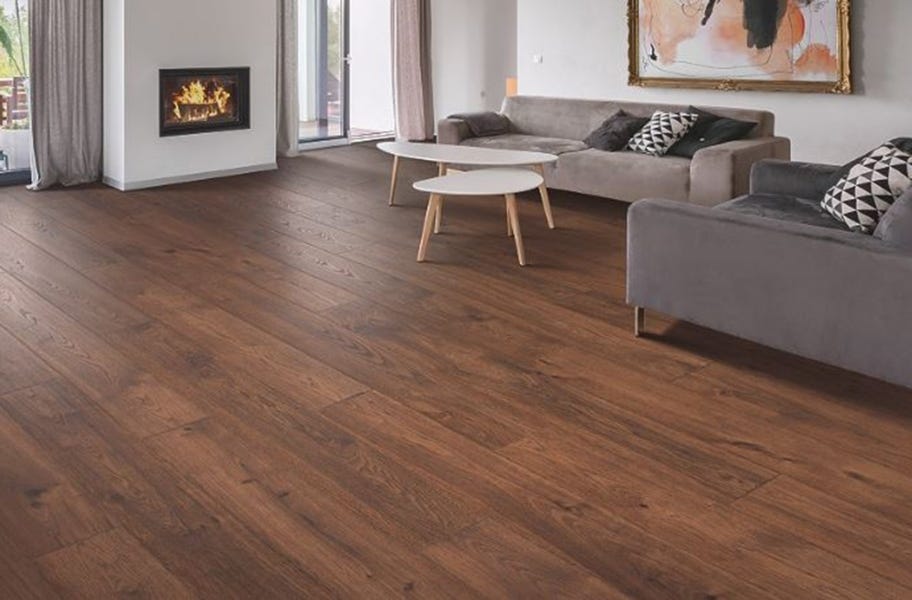
Carpet floors can be a hassle to work around, especially when you’re renting, but they don’t have to be! When you put a temporary floor over carpet, you can have beautiful, easily installed new floors that also help save the carpet underneath. The question is: how is it done?
When there is no way to replace the outdated carpet in your rental property, do you have to live with it? Of course not; your place deserves gorgeous floors! If only you could just slap a new floor on top of it, right? I’m happy to tell you, you can!
It’s true! Laminate and vinyl planks can float over subfloors due to their tongue and groove installation process that locks the planks together. So there’s no need for adhesives, nails, or staples to secure your planks to the ground.
In this guide, you will see the special considerations for the pile height of carpet you’re working with, the temporary floor you choose, and of course how to get the job done and simply install your flooring.
Related Content >> Easy DIY Flooring Solutions
Carpet Pile Height and Its Effects on Temporary Flooring
Realistically, how much is there to really learn about your carpet? It’s not what you want, so just cover it! But there’s a little bit more to it than just covering it; it all depends on the plushness, or pile height, of your carpet.
Low Pile Carpet
If you’re working with carpet tiles or just thin carpet with low pile, there is not much padding beneath your step, so you don’t have to worry about your floor's stability. That’s not the case with thickly padded, high pile carpet. That’s why there are necessary steps to take when working with plush carpet.
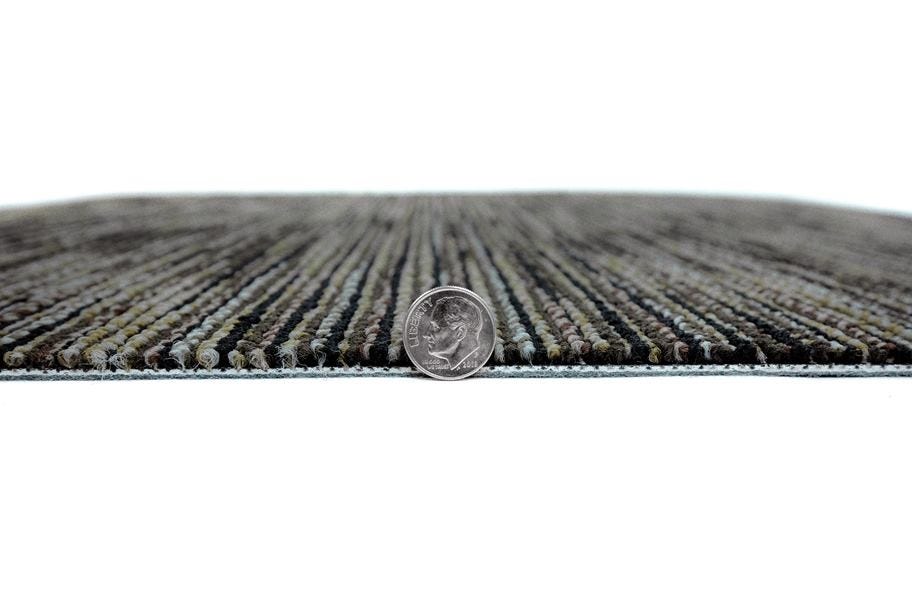
High Pile Carpet
While carpet padding can add a nice squishiness to your step, it can also unlock your interlocking planks. So unless you want moving floorboards while you walk, you’ll want to put a solid surface between your carpet and planks; we suggest using a ¼” sheet of plywood. This keeps planks from shifting and unlocking.
What Other Experts Are Saying
“While carpet has been a popular flooring choice for homes, we are seeing homeowners start to move to LVT for numerous reasons. The number one reason why we see people choosing products from Mannington’s ADURA® vinyl plank line over other flooring options, including carpet, is that the floor is waterproof. With busy households, including kids and pets (and their messes), having a waterproof floor is becoming a requirement.”
- Sean Laizure, Mannington Floors
Temporary Flooring: What Are the Options?
Temporary flooring can be what breathes new life into a space, without breaking the bank and spending a lot of time tearing out carpet. The most common type of floors floated over carpet are vinyl and laminate, given they are budget-friendly and feature a simple interlocking system of installation.
Vinyl Planks
Vinyl planks are designed to resemble hardwood and can be found in a number of wood-look textures such as hand-scraped, wirebrushed, and distressed. Known for its excellent durability, vinyl planks are built to last with its layers of strong material.
Whether it’s temporary or permanent, vinyl flooring is super easy to maintain as most options are water-resistant and many are fully waterproof- yes, 100% waterproof! Plus, never fear cleaning your floors, because vinyl is also easy to clean. All you need is the occasional vacuum and damp mop to keep your WPC looking fabulous.
Cutting Vinyl Plank Flooring
- Before cutting the planks, check the cutting instructions for your particular flooring product
- Mark the plank where it should be cut, then score the mark with a sharp utility knife
- Using a tile cutter, or by snapping the plank where it was scored, cut your plank.
SHOP INTERLOCKING VINYL PLANKS
Related Content >> Cheap Flooring Ideas
Laminate Flooring
Laminate flooring is a synthetic floor that was the first man-made alternative to natural wood. This floor has quickly gained popularity as manufacturers created increasingly realistic looks that could easily pass for real hardwood with styles such as reclaimed, weathered and distressed wood. While laminate not as popular as vinyl, it has gained a lot of its market share.
Laminate flooring’s supreme durability makes it a good option for high-traffic areas or homes with kids and pets as it is scratch resistant. While it's not 100% waterproof proper installation keeps water from seeping through the planks.
Even better: laminate is easy to maintain. For areas that are prone to spills, simply mop or sweep up messes as needed. No floor waxing is ever necessary.
Cutting Laminate Flooring
- Before cutting the planks, check the cutting instructions for your particular flooring product
- Mark the plank where it should be cut using chalk or a pencil
- Using a table saw, miter saw, circular saw or hand saw cut the plank with the finished side up.
Note: it’s important to allow your planks (both vinyl and laminate) to acclimate for at least 24 hours before installation. This lets the flooring adjust to the temperature of the room and helps avoid buckling when the planks expand and contract.
How to Install Floating Floors Over Carpet
Before you begin, make sure you have the necessary tools for installing your floor.
- Tape measurer
- Pen
- Utility knife (to cut vinyl planks)
- Ruler
- Rubber mallet
- Tapping block
- Spacers
- Tile cutter or table saw (to cut vinyl or laminate planks)
- Plywood* (optional, for high-pile carpet)
*Plywood is highly recommended when installing over high-pile carpet. When placing plywood sheets over plush carpet, lay them in the opposite direction the floor will go. If you are using more than one sheet of plywood, tape the sheets together at the seam. To learn more about how to install plywood, check out our helpful video.
Related Content >> The Best Flooring for Flipping Houses
Now let’s lay some flooring!
- Remove all furniture and items from the room, and vacuum the carpet for a clean starting surface. If possible, remove the baseboards for a more finished look.
- Place spacers between the wall and the planks. Use your spacers to ensure there is a ¼” expansion gap from the wall.
- Set the first plank in the corner of the room, working from left to right. Complete the first row by interlocking the tongue and groove connectors and aligning the seams.
- If you run out of space in a row, simply measure the gap between the wall and the last plank, then mark and cut the next plank accordingly. (For cutting instructions for both laminate and vinyl refer the sections above, as each has a different cutting process.)
- Use the leftover cut ends that are at least six inches or longer to begin your next row in order to stagger the planks and give them a more natural wood floor look.
- Continue moving down the room ensuring that the planks are interlocked and all the seams have a tight fit by using the tapping block and rubber mallet to tap the planks into a locked position. Add spacers every few feet around the edges of the flooring and remove them when the installation is complete.
Voila, you now have a dazzling new floor right over your old carpet! It truly is that simple.
Related content >> Temporary Flooring for Renters
Conclusion
Wow! How does it feel to conquer renovating your floor without destroying your carpet? Pretty fantastic, I’m sure. With the proper floors, tools, and surfaces you can get the job done and install your new floor today.
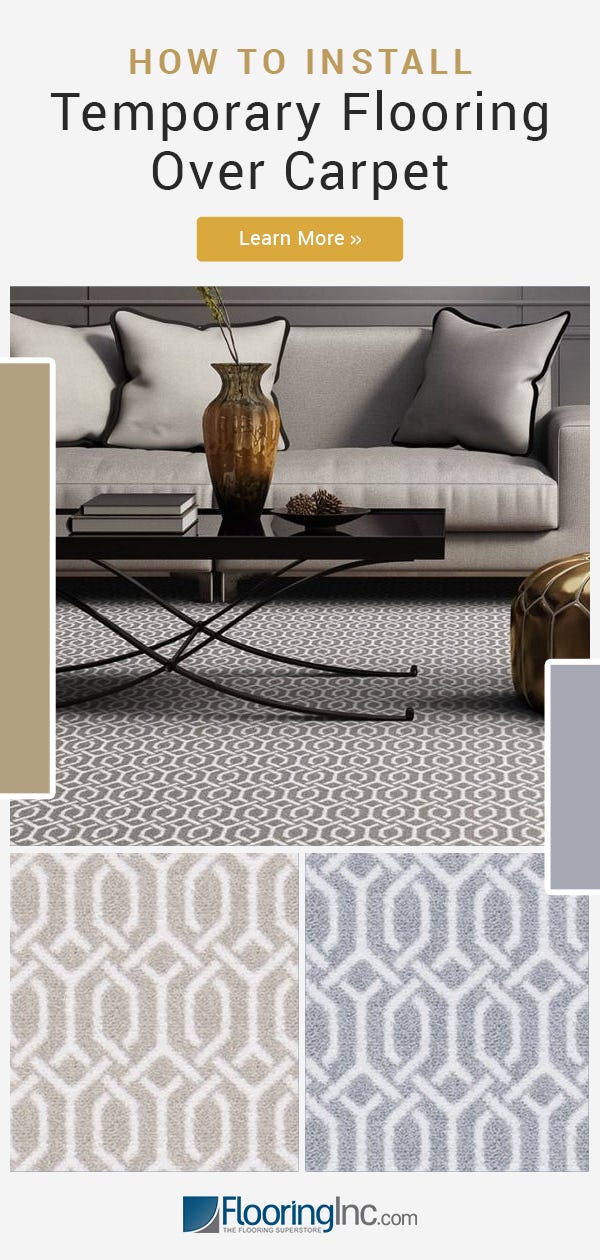



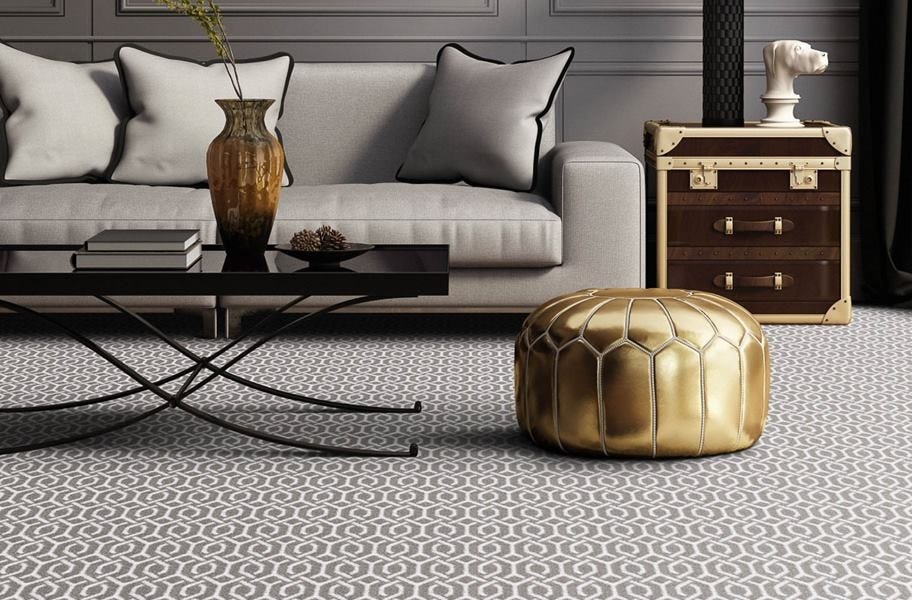
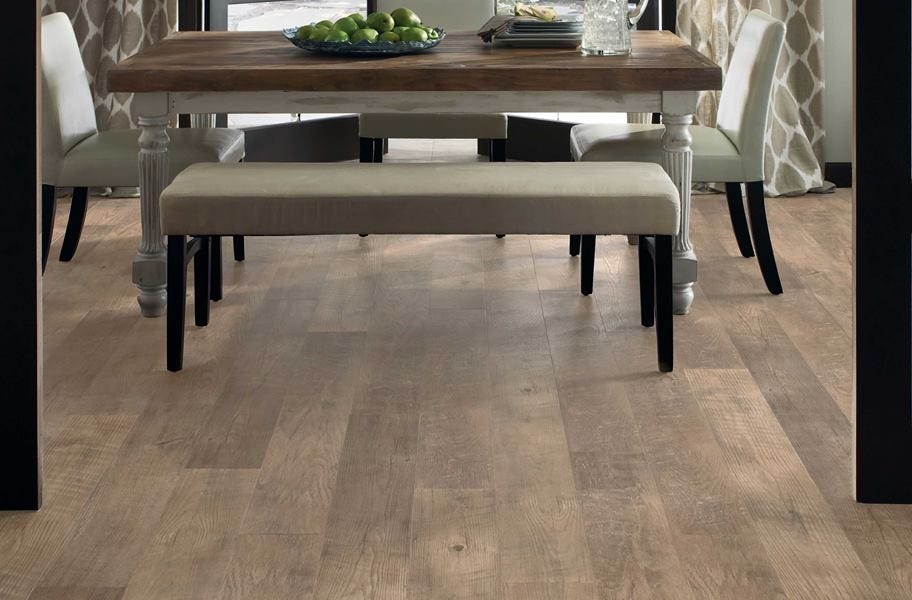
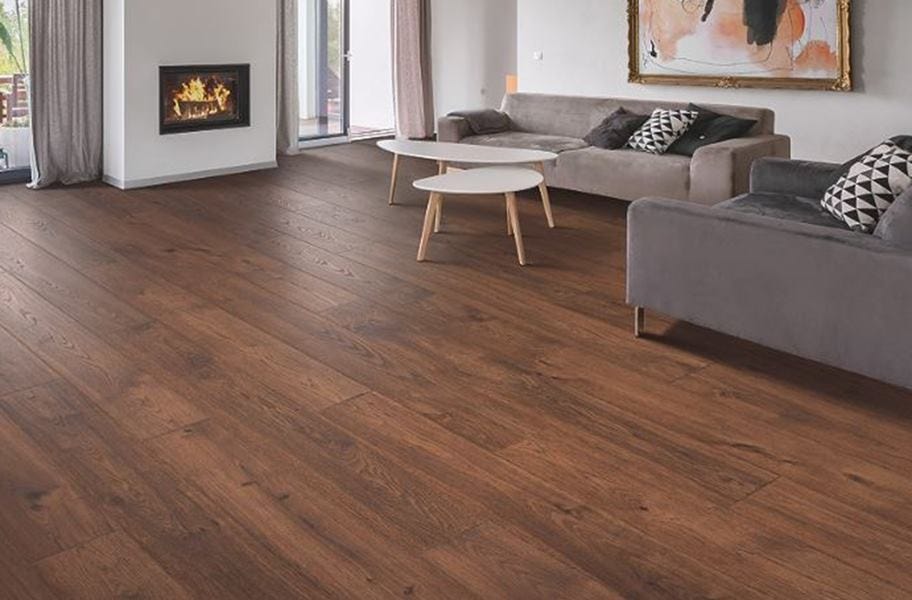
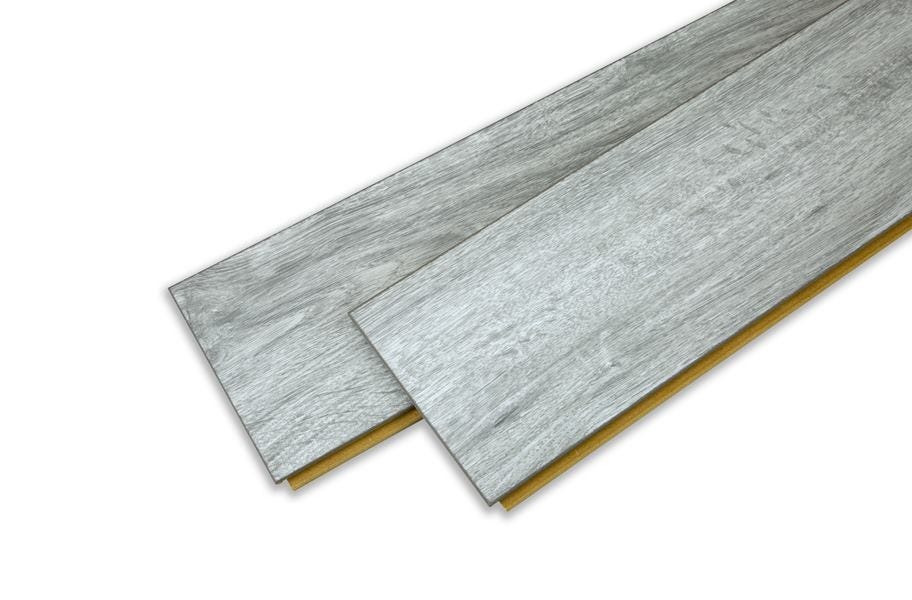
Thanks for the information. Wonder if I can use a non-structural plywood or is there is another alternative less expensive to plywood
for a high-pile carpet
Thank you for your question.
When it comes to installing over high pile carpet, plywood or backer board is what we recommend. However, different thicknesses of plywood cost differently, so you could go for thinner plywood.
I hope this information helps, and good luck with your project.
Thank you for your question.
On high pile carpet, you'll want to first flatten or squish the tall carpet fibers so you can easily install the carpet reducer. Then you can place a reducer the same way you would over hard surface flooring.
I hope this information helps. Please let us know if you have any other questions in the meantime. Thanks again!
I'm putting 3/8" rubber roll overtop of carpet. I see that putting a plywood subfloor down is suggested. I have hard vinyl tiles that are designed for a garage. Any thoughts on using those tiles rather than the plywood?
Thank you for your question. You can use those vinyl tiles as well, as long as they create a hard, flat surface over the plush carpet. Let us know if you have any other questions and we'll be happy to help!